We Are Everywhere

To call the village of Gortahork remote would not be out of order. In the far reaches of western Donegal it sits, at the edge of the sea, barricaded off from the rest of the county by a fierce looking mountain range. And since the closure of the regional railway line in the 1960s, it is not serviced by public transport - although private coaches operate in the area, making it possible to get around via bus & bicycle with a bit of planning. It was in this manner that I first arrived there some weeks ago, marveling at its beauty, isolation and Gaelic-only road signage. But while all of these things I'd expected from the area, what I didn't expect was to meet a kindred velo-spirit within moments of arrival. I was exiting the Offig an Phoist, if you will, to discover a woman examining my bike, which I'd left leaning against the wall.
"That's a nice bicycle," she said, giving me a searching, experimental look, "...a lovely bicycle?"
I laughed in disbelief.
"It wasn't just the bike I recognised, but your tweed coat," she explained. We were soon at her house, looking at bikes.
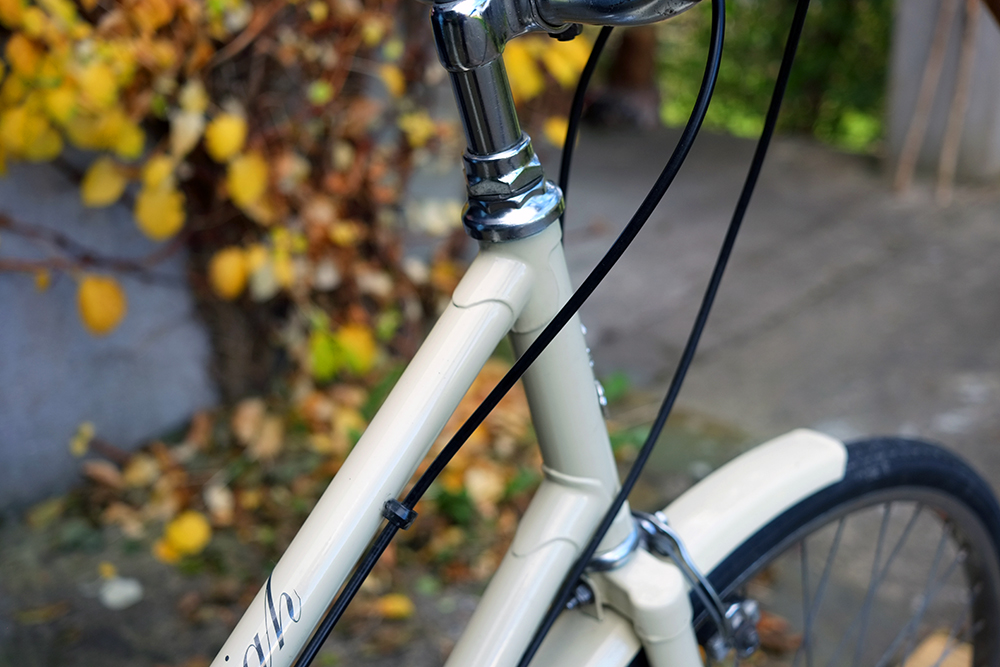
AJ stumbled upon this blog a few years back, when she decided to spruce up her old Raleigh Colette. Inspired by stories such as those of Carice's Raleigh Sports and Somervillain's Shogun conversions, little by little the sprucing up turned into an all out refurbishment project, complete with fresh powdercoat and updated components.
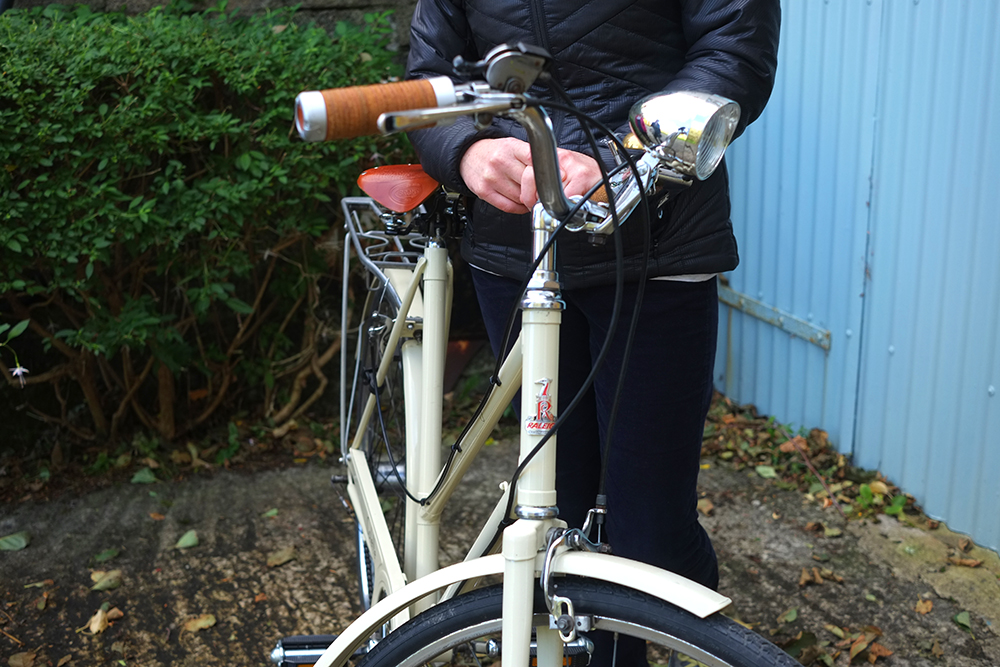
The Raleigh Colette is not a typical choice for such deluxe treatment. Produced through the 1980s right up to Raleigh's demise, it was a model that struggled to find direction in a culture where bicycles were increasingly associated with sport, not transport or casual rambling. Thus geared toward the sporty young woman of the '80s, the Colette was an attempt to pare down and freshen up the more iconic Raleigh Sports, which by then must have seemed clunky and old-fashioned to much of Raleigh's target market.
Unfortunately, the result was not exactly striking. From one year to the next, the designers could not even decide on the shape of the bike. For that reason, some Colette models are found with parallel step-through tubes, and others with shallower-angled top tubes, while others still were made with slightly curved, "loop" style frames (as in this lovely refurbished example from CycleEXIF). Who knows whether they even all used the same tubing and geometry; for all I know one Colette could ride completely different from the next, depending on year of production. In the looks and colourscheme department, these bicycles did not win any prizes either; certainly the nicest looking Raleigh Colettes you are likely to find, are those that have been repainted and overhauled aftermarket.
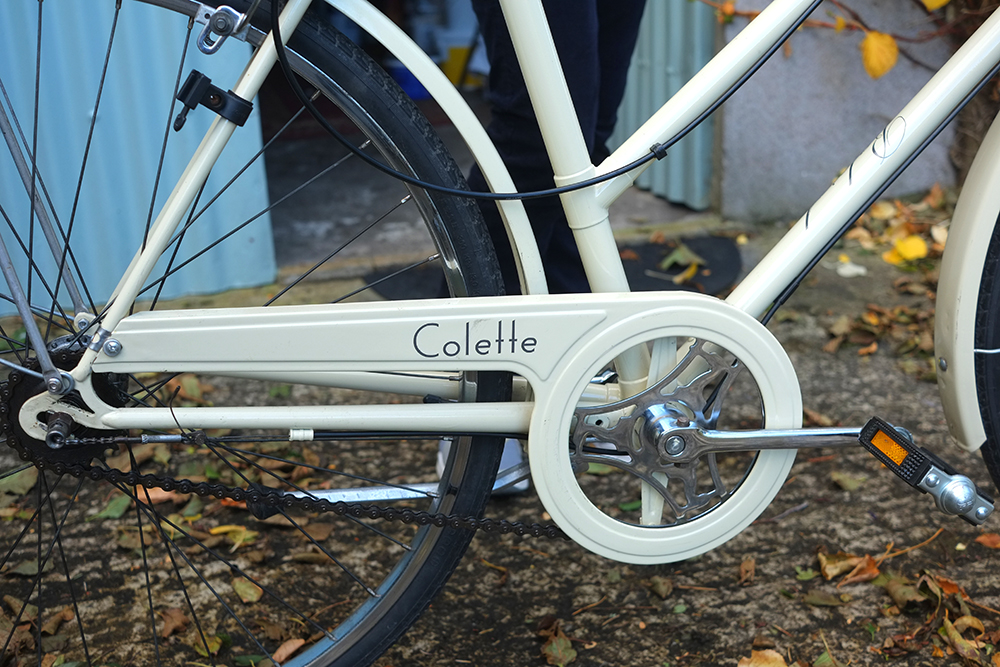
Some are bound to ask, why bother with a bicycle so unremarkable? Put simply: because AJ liked how it rode, and she liked how it looked. This alone made it special and worth refurbishing, regardless of pedigree or objective value.
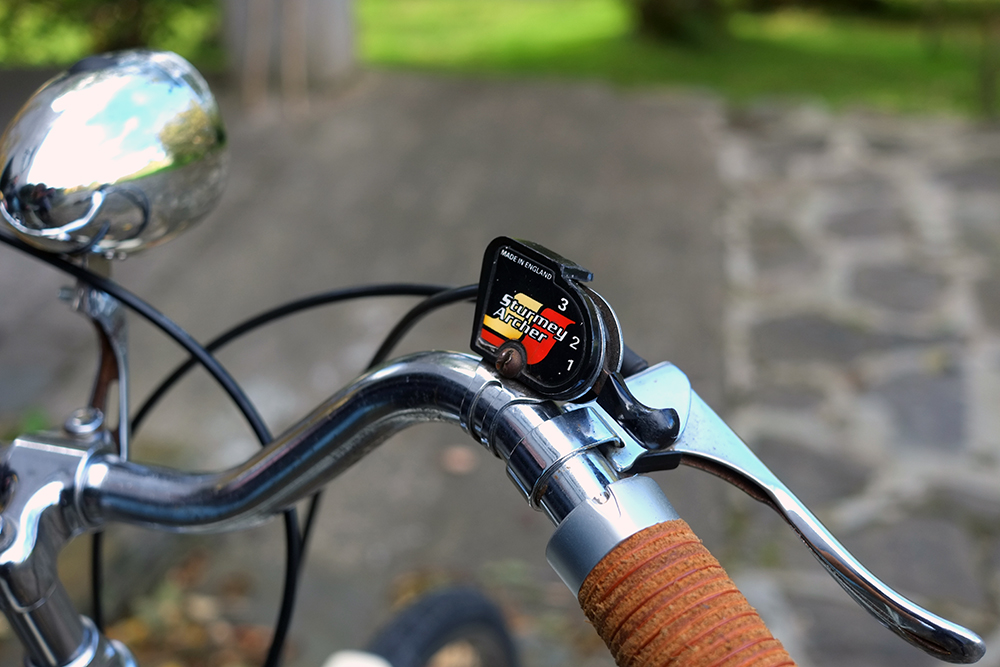
And so off the bicycle went to a series of local workshops for disassembly and stripping and powdercoating and rebuilding. This was accompanied by months of researching, saving for, and acquiring some new parts.
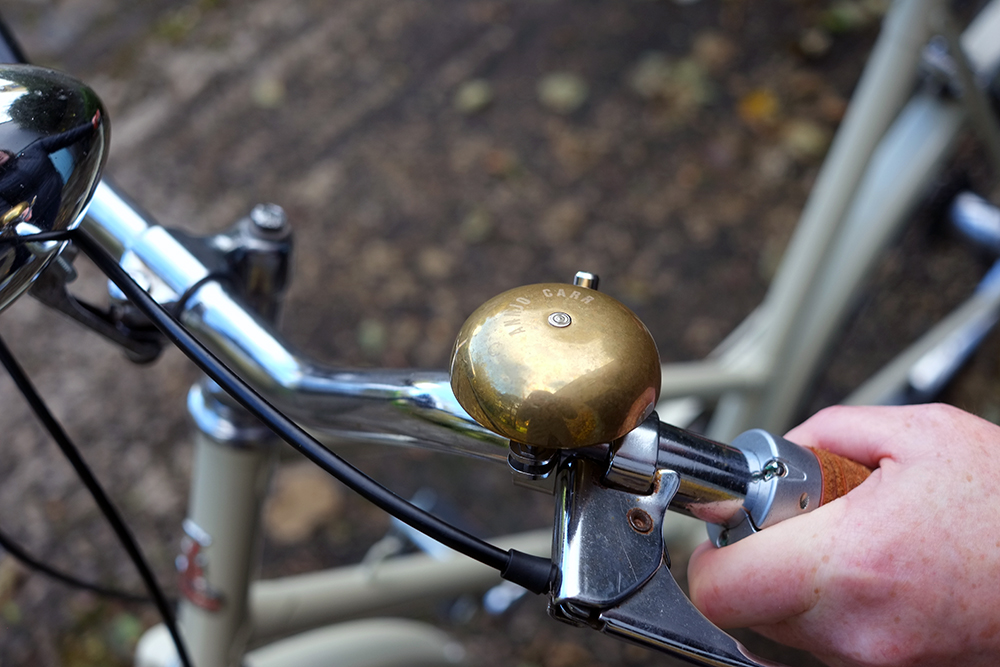
Until at last, complete with personalised brass bell, the Colette was ready to ride. For the past few months, AJ - an artist and teacher - has used this bike for much of her short-distance transportion, including trips into the village for errands and pub transport, as well as leisure rides.
One thing that surprised me, is that AJ did not see fit to change the original gearing on the Colette. Gortahork is a very hilly place, and as many have noted the vintage 3-speeds tend to be geared high. Having grown up in the area though, AJ is used to the hills and does not seem especially bothered - and I cannot help but admire that, with a shudder, as I grit my teeth whilst climbing up to her house on my own sub-1:1 granny chariot!
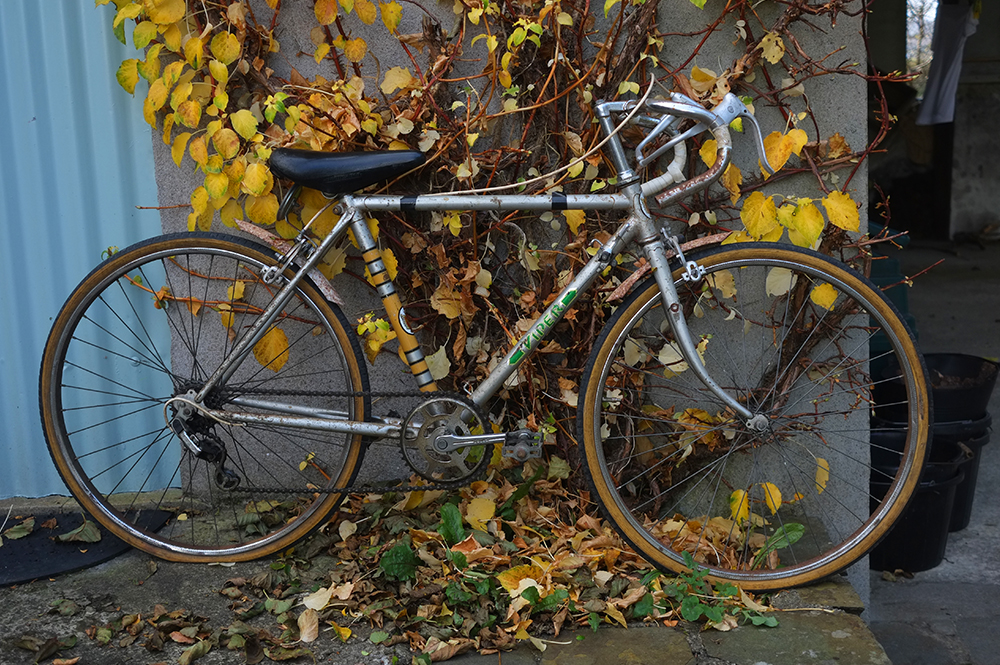
As we talked about gearing, I followed AJ into the depths of her shed and was introduced to a number of other machines, including a pair of e-bikes she rides with her mother over the mountain roads, and a '70s step-through with drop bars, in some ways very similar to my "shattered Record." But the most intriguing among these to me, was this Windsor Viper children's roadbike, which I dragged out into the light, stunned at how heavy they managed to make this tiny machine.
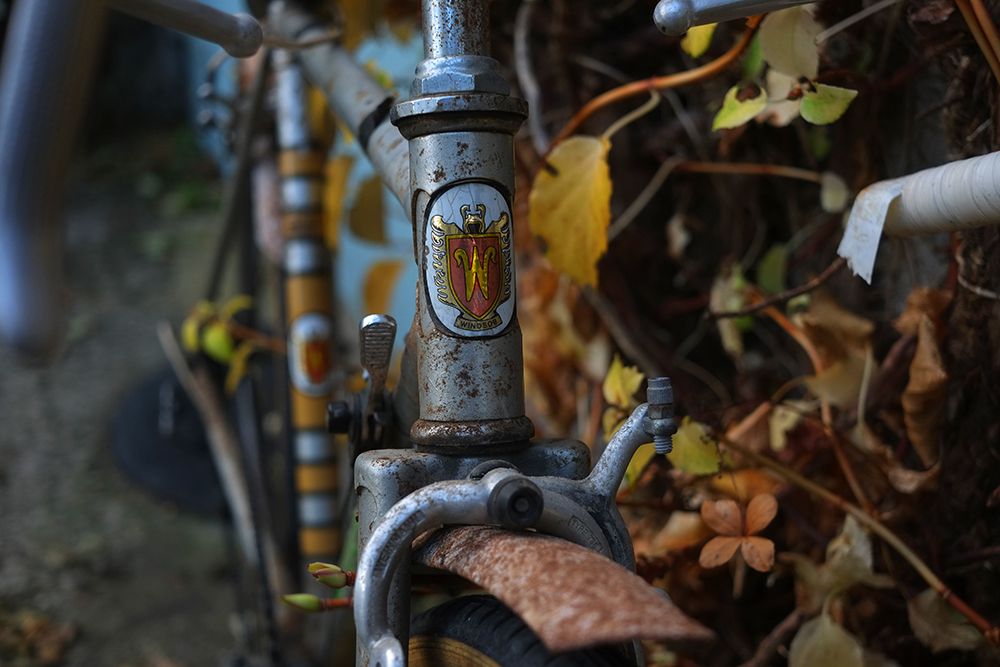
Prior to setting eyes on this bicycle, I had been aware of two unrelated Windsor brands: one being the cheapo mail-order bikes sold today, and the other being Windsor Mexico, which produced Cinelli-lookalike roadbikes in the 1970s. This Windsor kid's bike did not seem to share the build characteristics or headbadge design of either of these brands. And so, very possibly, there is a third, even more obscure, Windsor Bicycles brand, hitherto unknown to vintage bike trivia enthusiasts (you're welcome!).

The headbadge appears to depict a screeching insect, with a shield upon its breast. The lugs, the weight, and the medley of components suggest a lower-tier build from the '70s. And the sizing is suitable for a teenager, or an adult under 5ft in height.
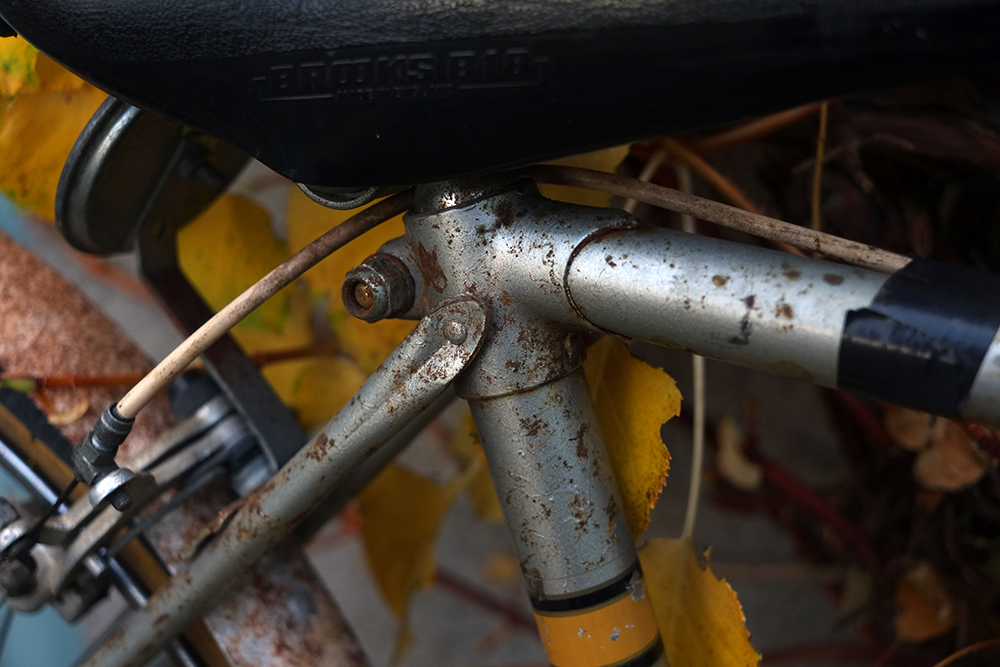
The bike once belonged to AJ's cousin, and she recalls him riding it quite a bit when they were kids.
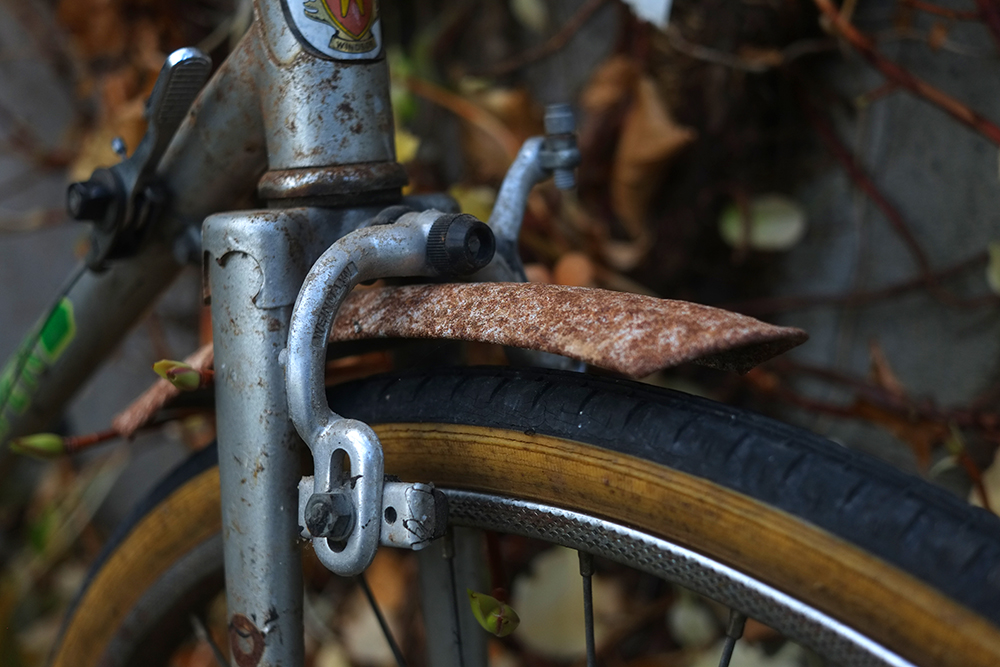
After that it languished for decades in an aunt's shed, until she rescued it and brought it into her own, while deciding what to do with it.
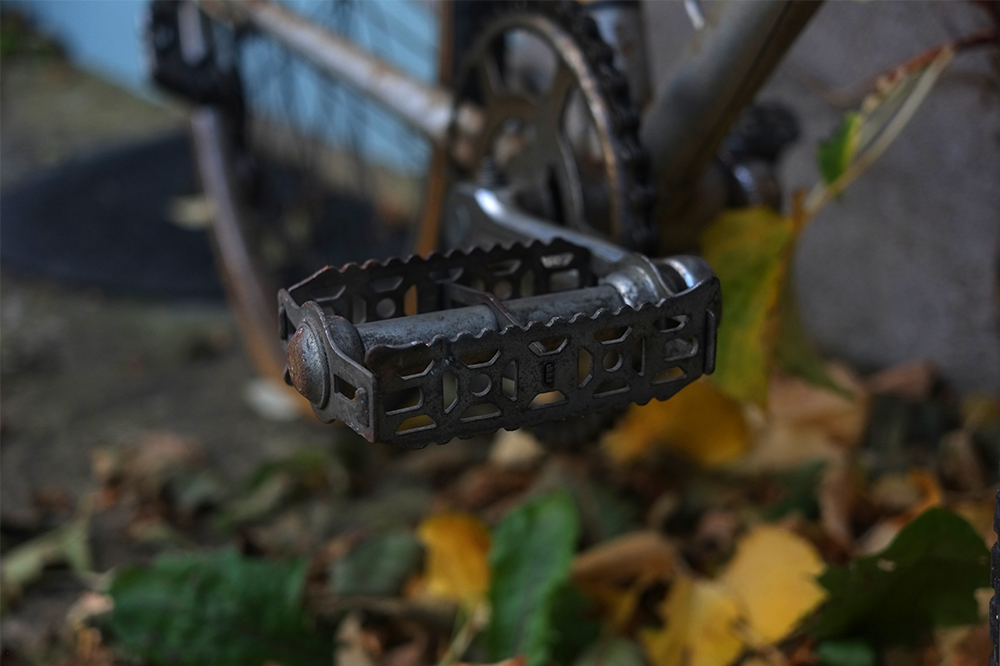
Another restoration project? It would probably be for the fun of it only, as few kids of today are likely to delight at the idea of riding something this heavy!
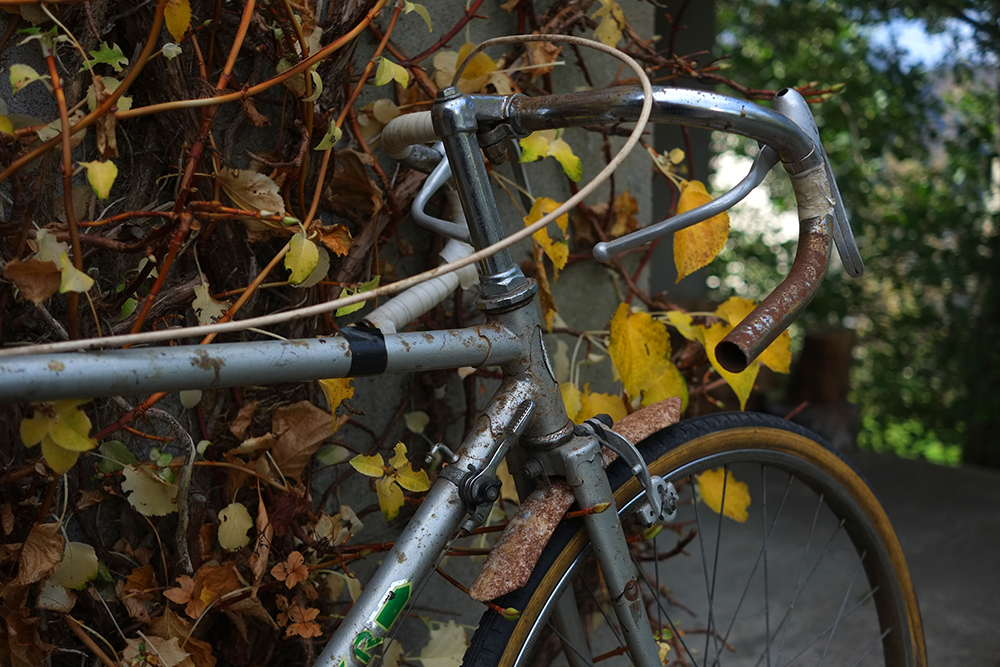
On the other hand, with some tweaking this 26" wheel bicycle could be set up to fit a small adult who might very much enjoy it. While it might not be valuable, this Windsor Viper is certainly unique - and, to my eye, quite attractive.
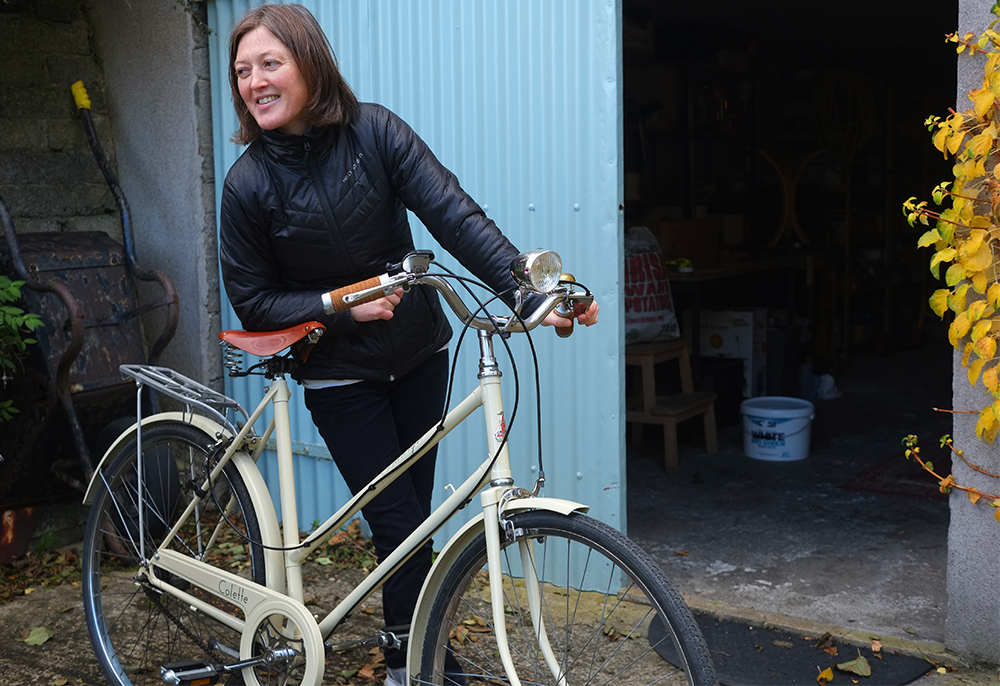
As I look through AJ's pile of bikes and consider my own, once again I find myself thinking about what motivates us to do this stuff - to take an interest in the history and construction of these two wheeled machines that did not need to be anything more than tools, to admire and research them, to fuss and modify, and, moreover, to enjoy reading stories of others who do the same. And regardless of what this motivation is, just think of how odd and wonderful it is that the world is full of us!
And so the next time you find yourself in a region that seems as remote and detached from "cycling culture" as can be, just think! Somewhere out there, in a house, apartment, or shed, and hidden from plain sight, there surely live some loved and lovely bicycles - along with their lovely owners - that would surprise and delight you, should you ever chance upon them.

Completely off topic, Im sorry. But does that sack say Irish War Potatos???
ReplyDelete(delightful post, but I cannot stop wondering about the war potato!)
Ms. AJ's Raleigh is very nice looking. Probably better than when it was new, I'd guess.
ReplyDeleteAlso, thanks to previous poster: I, too, am now wondering about Irish War Potatoes. I just have a sack of Yukon Golds in my kitchen.
Wolf.
Probably Irish Dwarf Potatoes :)
DeleteI am just guesstimating scale from your portraits here, but might the owner herself be a good fit for the Windsor?
ReplyDeleteThe owner is on the petite side, but also that Colette is a large frame. The Windsor could technically be set up for her, but a bike like that would look funny with a lot of seatpost showing.
DeleteAJ's Raleigh is beautiful! An excellent resto-mod, keeping the best of the original bike while incorporating new parts as needed. The powder coating paint job looks great. I've had very good results with powder coating as well, makes an old bike look new. On the other hand, the Winsor's patina is wonderful too. I could see giving it a good cleaning, polish and wax, no need to have it repainted.
ReplyDeleteOne question, the rear brake cable guides look a little different to me. Are they plastic? How are they attached to the frame?
Thanks so much,
JohnS
Hahaha. Oh God, I remember meeting you in Boston years ago and talking to you for like an hour about bikes outside Starbucks before you admitted to being Lovely Bicycle! You were ever so helpful but mentioned nothing about the blog! For a while there I was second guessing myself. You are missed in Boston!
ReplyDeleteThank you! I do get a little shy when recognised : )
DeleteWare potatoes, not War potatoes!
ReplyDeleteWare potatoes are those selected of reasonably uniform size and free from blemish for sale to the consumer for eating.
The smaller ones would be graded out and probably used as seed for the following year's crop. Very large potatoes are also graded out as they are often hollow in the centre, they would probably be cut up and used as cattle feed or possibly used to make chips.
Well that's not nearly as fun, now. Here I was, wondering all day the manner in which that sack of spuds was used for warring.
DeletePotato cannons?
DeleteAh darn. And I was just about to make up an elaborate tale about the history of the Irish War Potato.
DeleteI don't doubt for a moment that you're more than willing to create a narrative, that much has been consistent throughout this blog and, in fact, has been the dominate theme.
DeleteIndeed!
DeleteHeh. It's actually * 'ware Potatoes*. They are all of them cunning, and one subspecies is known to be carnivorous.
DeleteAJ did a great job on that bike. It looks like a really comfy ride.
Ah but do you go for soft or hard ware potatoes?
DeleteConsidering where *I* now live, I go mainly for potatoes that will mask the taste of Lutefisk,
DeleteAh yes. These here should go with Lutefisk quite nicely!
DeleteThose do look quietly fierce.
Delete"Lovely Bicycle"
ReplyDeleteEvery cyclist has a love affair with their favorite bike. People in earlier days saved their hard earned money for their only form of transportation. The bicycle was an important part of their life. Keeping their bikes is working order was a high priority.
I enjoy watching Masterpiece and the British shows depicting times around 1900's on PBS not only because the programing is much better than the other crap on the other stations but for the often seen vintage bicycles used for transportation with fenders, lights, and bar brakes.
During one of the episodes of "Home Fires" a woman shows up on a refurbished bike that had been in a crash and the guy says to her..."Lovely Bicycle". I smiled.
AJ sounds like a pretty squared away person and her bike looks that way too. I'm not surprised she's an artist of some sort as well. Most of the people I know that have completely refurbished old bikes are creative people in other parts of their lives, especially if they chose bikes like that.
ReplyDeleteI wish someone around here had a nice plastic Brooks B-18 on an old bike in their shed I could get my hands on, that's classic Old Skool BMX treasure right there...
Spindizzy
The Windsor has a corollary brand--Condor. There are three Condor bike brands; at different times bikes of that name have been made in Switzerland, Britain, and Mexico. No relation between any of the three from what I know.
ReplyDeleteThat sounds like a not-so-secret society's recognition phrase. "That's a nice bicycle. One might say, it's a _lovely_ bicycle."
ReplyDeleteI'll wager you were wearing the tweed jacket with crusty spots on the sleeves? No wonder she recognized you! There can't be all that many red-headed cyclists in greater metropolitan Gortahork who, when their nose is running and they gotta hork, just hork.
ReplyDeleteWell Gortahork does mean "valley of the dirtied sleeve" in old Irish.
DeleteHow onomato-poetic! Just rolls off the tongue, Gortahork does. I've been trying to come up with the perfect rhyme for a racy limerick. But all I've got so far is Robert Bork.
DeleteIn Irish (Gort an Choirce) it is actually pronounced something like "gorta-hork-yeh". Either way - perhaps a limerick challenge for Emily of Dill Pickle!
DeleteThere once rode a blogger to Gortahork
DeleteHer bars wrapped with care in brown cork
Traversing lough and dale
Writing of mixtes and trail
“For me”, said she, “a wee more rake in the fork”
Excellent! : )))
DeleteI like the bike's creamy hue. It's a nice departure from Raleigh's more typical green, red and coffee offerings . It appears to be a post-Nottingham Raleigh. One reason that I bought my Super Course 12-speed back in 1981 was that it was produced at the tail end of the proud Nottingham era. If my memory serves me, Raleigh production shifted to the US and later to Japan under new ownership. I still have that bike. It rolls on steadily as my fixed gear.
ReplyDeleteI recently purchased a late '70's Raleigh Cameo and am only putting new tyres on and oiling it, etc, the basics. I'll ride it around for a while but may end up doing a complete restoration, I like the idea of that. The bike, by the way, rides like a dream, I'd be happy to ride it from Lands End to John O'Groats, 3 speeds and all. Sorry to say this, but they just don't make 'em like that any more .... :)
ReplyDeleteBeautiful restoration and paint on that bike! I love the chain guard and the overall look of the bike. It comes down to a love of art and bicycles in this case. As an artist and bike lover, I wish the bike industry would hire such a person to help design functional, geared, lighter, beautiful transportation bikes with quill stems without being priced so high only some can afford them.
ReplyDeleteReminds me of my recent trip to a frame builder to fix the braze on on one of my bikes. I made a day trip of it, and drove deep in to the Amish country of eastern Ohio. The shop was in a barn, from the road there would be no way of knowing there's a shop there. Inside were dozens of frames, new and old, custom and those being repaired. It seemed the least likely place to find a frame builder or even a quality bicycle, but tucked into the hills there it was.
ReplyDeleteAmish frame builders in Ohio? That just has me thinking of Yehuda Moon!
DeleteIn case you missed it - Yehuda Moon is updating again.
Delete